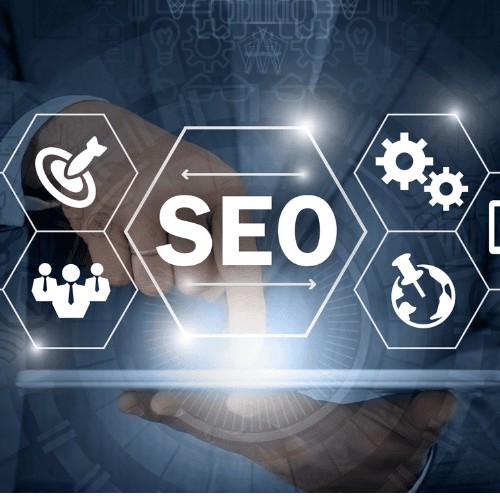In today’s digital world, ensuring website accessibility is no longer just a recommendation, but a crucial aspect of ethical and inclusive web design. By following accessibility standards, you can create websites that are usable by everyone, regardless of their abilities. This not only benefits individuals with disabilities, but also broadens your reach to a wider audience and enhances the overall user experience for everyone.
The internet has revolutionized the way we access information, connect with others, and conduct business. However, for individuals with disabilities, navigating the digital landscape can be a significant challenge. Websites riddled with inaccessibility barriers often exclude entire demographics, hindering their ability to participate fully in the online world.
This article delves into the importance of website accessibility, exploring its impact on user experience, legal compliance, and overall business success. We’ll uncover the benefits of catering to a diverse audience through accessible design, address potential challenges, and answer frequently asked questions to guide you towards creating inclusive and user-centric websites.
Understanding Accessibility:
Website accessibility refers to the design and development practices that ensure everyone, regardless of their abilities, can perceive, operate, understand, and navigate web content. This encompasses individuals with a wide range of disabilities, including:
- Visual impairments: Blindness, low vision, color blindness
- Auditory impairments: Deafness, hard of hearing
- Motor impairments: Difficulty using a mouse or keyboard, limited dexterity
- Cognitive impairments: Learning disabilities, memory issues, difficulty concentrating
- Speech impairments: Difficulty speaking or using a voice
The Power of Accessibility: Expanding Your Reach and Impact
Implementing accessibility measures goes beyond simply fulfilling ethical obligations. It unlocks a wealth of benefits for both users and businesses:
- Reaching a Wider Audience: By removing accessibility barriers, you open your website to a significantly larger user base. This includes individuals with disabilities, who represent a substantial and growing demographic. In the United States alone, over 61 million adults live with a disability, according to the Centers for Disease Control and Prevention (CDC). By embracing accessibility, you tap into this vast potential audience, expanding your reach and fostering inclusivity.
- Enhanced User Experience: Accessible websites are inherently user-friendly. Features like clear navigation, descriptive text alternatives for images, and proper use of color contrast benefit everyone, not just users with disabilities. A well-structured and accessible website offers a smoother and more enjoyable experience for all visitors, improving user satisfaction and engagement.
- Search Engine Optimization (SEO) Boost: Websites that adhere to accessibility guidelines often enjoy a SEO advantage. Search engines like Google prioritize websites that are easy for users to navigate and understand, and accessibility features often align with these criteria. This can lead to higher search engine rankings, increasing organic website traffic and visibility.
- Stronger Brand Reputation and Social Responsibility: In today’s socially conscious world, consumers increasingly value brands that demonstrate commitment to inclusivity and accessibility. By actively creating accessible websites, you showcase your dedication to social responsibility, fostering a positive brand image and building trust with a wider audience.
- Reduced Legal Risks: Many countries and regions have legal regulations mandating website accessibility. In the US, for instance, the Americans with Disabilities Act (ADA) applies to public-facing websites, and non-compliance can lead to lawsuits and significant financial penalties. By following accessibility standards, you mitigate potential legal risks and ensure your website adheres to relevant regulations.
Investing in Accessibility: Overcoming Challenges and Finding Solutions
While the benefits of website accessibility are undeniable, implementing and maintaining accessibility features may seem like a daunting task. Here, we address some common challenges and offer solutions:
- Initial Investment: Creating and maintaining an accessible website often requires an initial investment in resources, including training for web developers and designers, potential use of accessibility testing tools, and ongoing content updates. However, the long-term benefits and positive return on investment (ROI) often outweigh the initial costs. Consider the potential increase in user base, brand reputation, and SEO advantages to justify the investment.
- Keeping Up with Evolving Standards: Accessibility standards and best practices are constantly evolving. Staying informed and implementing updates can feel overwhelming. However, numerous resources are available to help, including the World Wide Web Consortium’s (W3C) Web Content Accessibility Guidelines (WCAG) and organizations like the Web Accessibility Initiative (WAI). These resources provide clear guidelines, tools, and ongoing support to assist you in creating and maintaining accessible websites.
- Addressing Complexity: Certain websites, particularly those with complex functionalities or interactive content, may present unique accessibility challenges. However, with careful planning and collaboration between developers, designers, and accessibility specialists, solutions can be found to ensure inclusivity while maintaining functionality.
Moving Forward: Embracing Accessibility for a More Inclusive Web
By prioritizing website accessibility, businesses can unlock a world of opportunities. From reaching a wider audience and boosting brand reputation to improving user experience and minimizing legal risks, the benefits are clear. By embracing accessibility, you can create a more inclusive online environment for everyone, fostering a more equitable and user-centric digital world.
Remember: Accessibility is not just a technical challenge; it’s a human-centered approach to web design. By prioritizing accessibility, you are actively empowering individuals with disabilities
Here’s how:
Catering to Diverse Needs: Accessibility features like alternative text descriptions for images, keyboard navigation, and closed captions for videos cater to users with visual, motor, and auditory impairments, allowing them to access and understand information effectively.
Improved SEO and User Experience: Accessible websites are often easier for search engines to crawl and index, potentially boosting your website’s ranking in search results. Additionally, a well-structured and accessible website with clear navigation and consistent design elements provides a smoother and more enjoyable experience for all users.
Legal Compliance: In many regions, adhering to accessibility standards aligns with legal requirements and regulations, mitigating potential legal risks associated with website inaccessibility.
Pros and Cons:
Pros:
Increased website traffic and user engagement
Improved brand reputation and social responsibility
Enhanced SEO and search engine ranking
Reduced legal risks and compliance issues
Creates a more inclusive and equitable online experience
Cons:
Initial investment in implementing and maintaining accessibility features
Requires ongoing monitoring and updates to ensure compliance with evolving standards
FAQs:
Q: What are some common accessibility standards?
A: The Web Content Accessibility Guidelines (WCAG) published by the World Wide Web Consortium (W3C) are internationally recognized standards for web accessibility.
Q: How can I check if my website is accessible?
A: There are several online tools and resources available to help you evaluate your website’s accessibility. Additionally, user testing with individuals with disabilities can provide valuable insights into areas for improvement.
Q: What are the benefits of accessibility beyond legal compliance?
A: As mentioned above, accessible websites offer numerous advantages, including reaching a wider audience, improving user experience, and enhancing brand reputation, making them not just a legal requirement but a strategic business decision.






